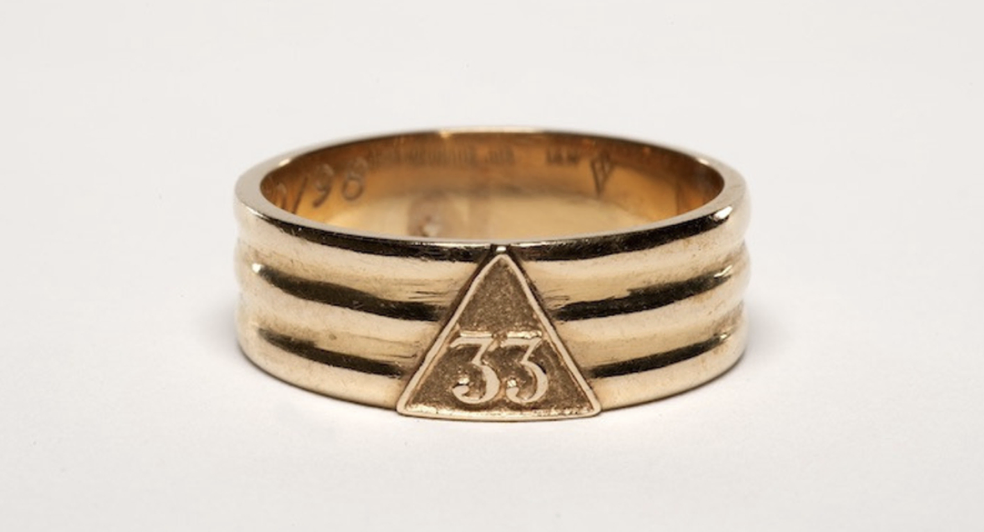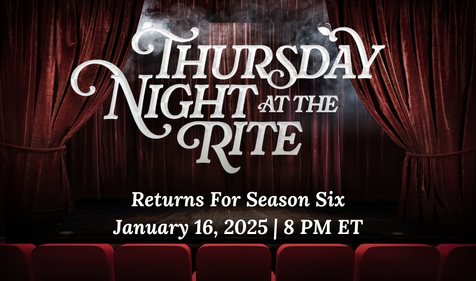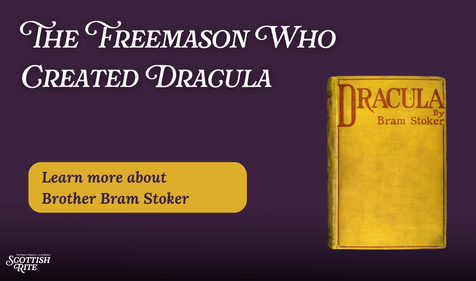The 33rd degree in Scottish Rite Freemasonry is conferred upon a member in recognition of outstanding service to the Scottish Rite, Freemasonry, or society.
In Scottish Rite Freemasonry, the 33rd degree is a title of honor and distinction. Master Masons in good standing may pass through the degrees, from Entered Apprentice, through the 29 degrees of the Scottish Rite, as well as the degrees of the other esteemed appendant bodies. However, the 33rd degree is only conferred upon those who have demonstrated exceptional dedication, service, and contributions to our fraternity and humanity. It is a degree that cannot be applied for; it must be earned. The nomination process varies from Valley to Valley, but once nominated, candidates must be elected by a ballot of the Active members of the Supreme Council.
This article sheds light on the significance, history, and symbolism encapsulated within this honored title. Whether you are a curious observer seeking to demystify the secrets of Freemasonry or a newly raised Master Mason, join us as we delve into the depths of Masonic tradition and illuminate the significance of the 33rd degree.
What are the Scottish Rite degrees?
The Scottish Rite is one of several Masonic bodies with its own degrees and themes. Freemasonry, in general, is a fraternal organization that emphasizes self-improvement, Brotherhood, and the importance of charity. The degrees and rituals are symbolic and intended to impart moral lessons and promote personal growth among its members.
Since its establishment in 1813, the Scottish Rite, Northern Masonic Jurisdiction has been organized geographically by what we call Valleys. Each Valley may consist of up to four subordinate Scottish Rite bodies that each confer a set of degrees.
In the Scottish Rite, Northern Masonic Jurisdiction, the four subordinate bodies are:
- Lodge of Perfection, which confers degrees 4 through 14
- Council of Princes of Jerusalem, which confers degrees 15 and 16
- Chapter of Rose Croix, which confers the 17° and 18°
- Consistory, which confers degrees 19 through 32
32° Scottish Rite, NMJ Freemasons are guided by our six Core Values: Reverence for God, Devotion to Country, Integrity, Justice, Tolerance, and Service to Humanity. The 29 degrees of the Scottish Rite serve as allegories that demonstrate how a Mason can apply these Core Values to his life while exploring the philosophical, moral, and symbolic aspects of the teachings of Freemasonry in greater depth.
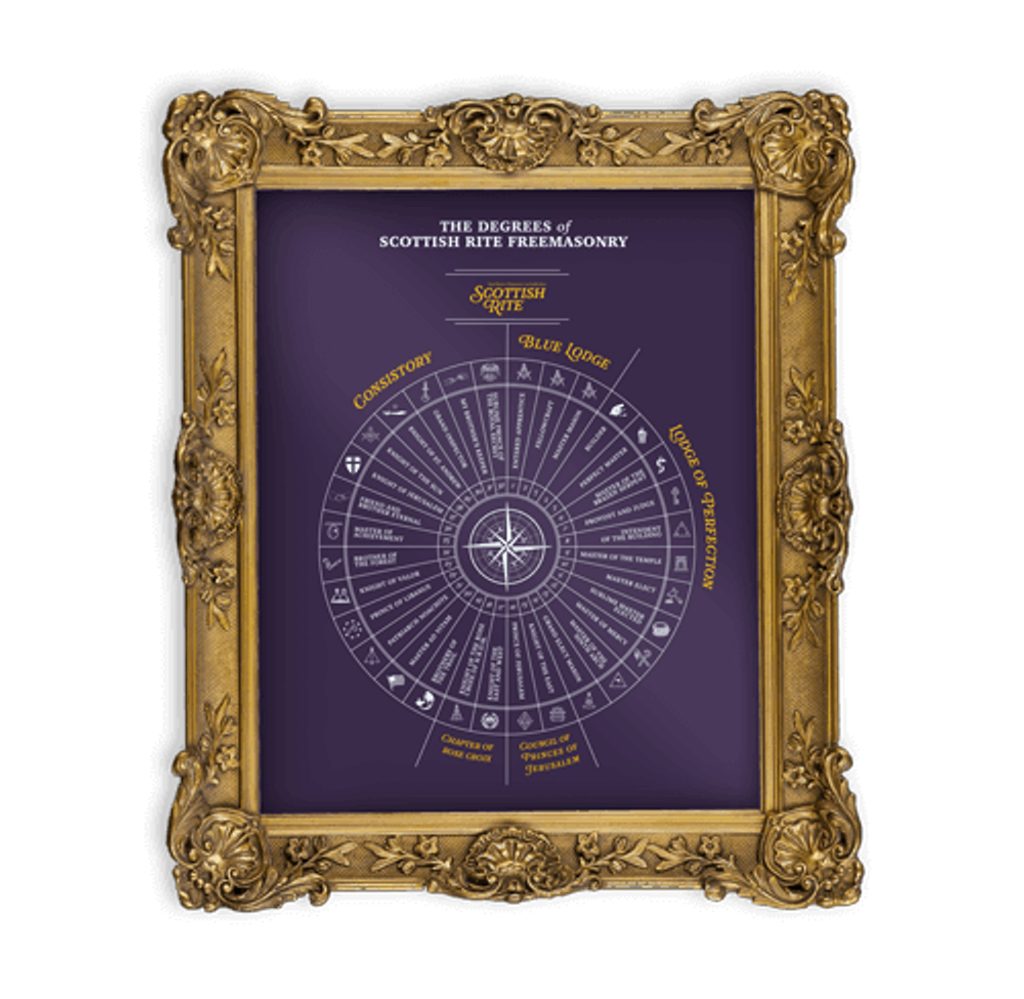
Download a Poster
Scottish Rite Degrees Poster
Download your free printable poster of the Scottish Rite degrees. This list of Masonic degrees is a reminder that there's always more light to be gained.
The 33rd Degree – Sovereign Grand Inspector General
The 33rd degree is an honor that can only be bestowed upon a Scottish Rite Mason. Members cannot campaign to receive this degree. It is an honor conferred solely by the Supreme Council.
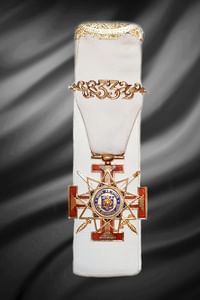
To become a 33rd degree Mason in the Northern Masonic Jurisdiction, a Scottish Rite Mason must demonstrate honor, virtue, concern for humanity, and a devotion to Masonic duty. The Supreme Council confers the 33rd degree to honor outstanding and selfless work performed in the Rite or public life. At its annual executive session, the Supreme Council elects members of the Rite to receive the degree. By conferring the 33rd degree, the Supreme Council acknowledges the outstanding contributions and devotion that an individual has shown both within and outside the fraternity as well as the individual’s future capacity for service. Attaining the 33rd degree does not confer any additional authority or governance within regular Masonic lodges.
History of the 33rd Degree
Freemasonry has been around for over three centuries, and the Scottish Rite, NMJ, for over 200 years. Given the long history of our Brotherhood, it should come as no surprise that receiving the 33rd degree in the early days of the Scottish Rite was very different from how it works today. An example of how the honor has evolved along with our fraternity can be found in the archives of the Scottish Rite Masonic Museum and Library, with a 33rd degree petition from Brother Killian Henry Van Rensselaer (1800-1881), a Mason from New York:
“I most humbly beg leave to offer myself as a candidate for admission into your Illustrious and Puissant Council…” wrote Brother Killian Henry Van Rensselaer (1800-1881).
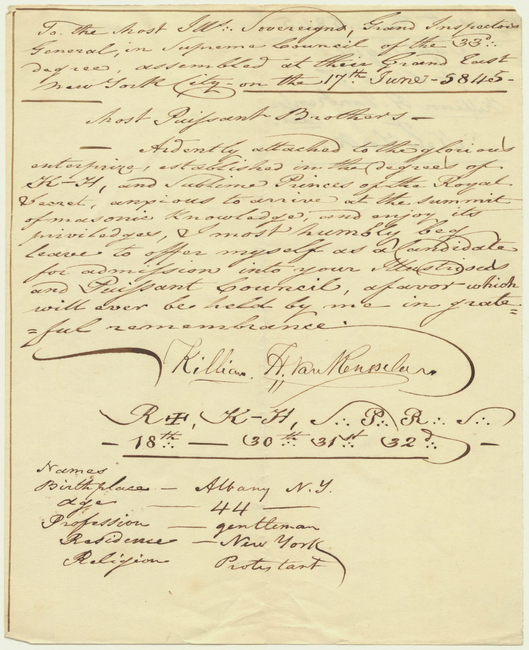
When Van Rensselaer petitioned to become a 33rd degree Mason, John James Joseph Gourgas (1777-1865), the NMJ's Sovereign Grand Commander from 1832 through 1851, worked with Giles Fonda Yates (1798-1859) to expand the Supreme Council. Following the Anti-Masonic period in the early 1800s, they recruited Brothers, like Van Rensselaer, to help revive the Council and revitalize Scottish Rite Freemasonry. Van Rensselaer was one of seven new members they chose, bringing the Supreme Council into a nine-member group.
Today, no Scottish Rite Freemason can petition to become a 33rd degree member.
Voting members of the Supreme Council are called Active Members. They are responsible for oversight of the operations of the Supreme Council. When there is a vacancy in the Active membership, an Honorary Member may be nominated and then elected to fill it. Prior to 1845, the designation of Honorary Member did not exist, so any Sublime Prince coroneted a 33rd degree was automatically an Active Member of the Supreme Council.
Becoming a 33rd Degree Scottish Rite Freemason
From the moment a man sets foot in a Masonic lodge, advancement in Freemasonry is based on a Mason's dedication, commitment, and service to the organization. There is no set path or specific criteria for receiving the 33rd degree. In 32° Scottish Rite Freemasonry, the 33rd degree may be conferred upon a Brother in recognition of his contributions to the fraternity or humanity. Being a 33rd degree Mason comes with responsibility, such as taking on leadership positions within their Valley or Masonic lodge, mentoring fellow members, and contributing to the collective good. By serving as role models, 33rd degree Masons help maintain the integrity of Freemasonry while ensuring the bond between members remains strong.
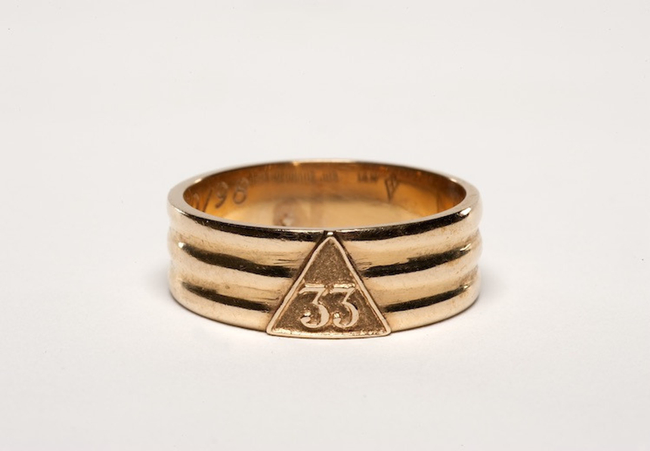
Additionally, a Scottish Rite Mason who has received the 33rd degree gains the right to wear the 33rd degree ring. As established in the Constitutions of the Supreme Council, the 33rd degree ring consists of "three plain, half-round gold rings united into one, not exceeding five-sixteenths of an inch in width and having on the outside an equilateral triangular-shaped plate, with the numbers 33 in Arabic characters." The ring is typically engraved with the motto of the 33rd degree, "Deus meumque jus" (God and my right), the member's name, and the date he received the 33rd degree. No alterations can be made to the 33rd degree ring.
Notable 33rd Degree Masons
Throughout our fraternity’s history, there have been many notable 33rd degree Masons, including:
Few honors in Freemasonry are as special to the honoree as becoming a 33rd degree Mason. Those who attain it are often Masons who have dedicated a significant portion of their lives to the principles and values of Freemasonry in general and the Scottish Rite, NMJ in particular.
Related Stories
Discover additional Scottish Rite blogs and news on this topic.
-
Here’s What’s New with Thursday Night at the Rite Season Six
Degrees
Read More about Here’s What’s New with Thursday Night at the Rite Season Six
-
The Freemason Who Created Dracula: The Story of Bram Stoker
History
Read More about The Freemason Who Created Dracula: The Story of Bram Stoker
-
A Funny Remembrance: The Life of Illustrious Brother Red Skelton, 33°
History
Read More about A Funny Remembrance: The Life of Illustrious Brother Red Skelton, 33°
